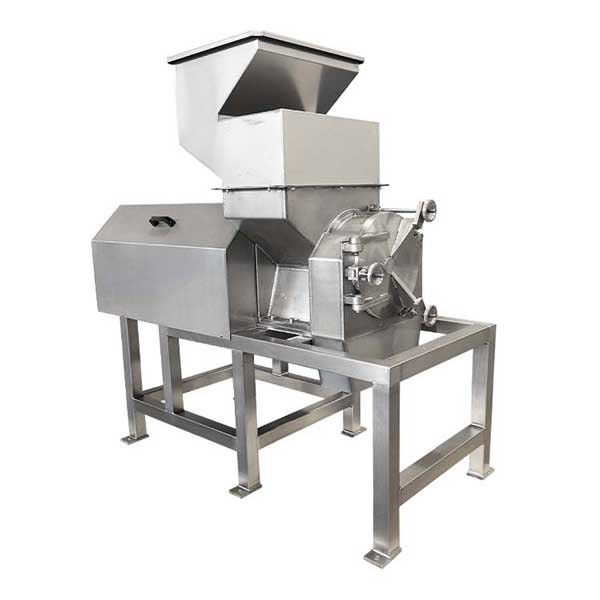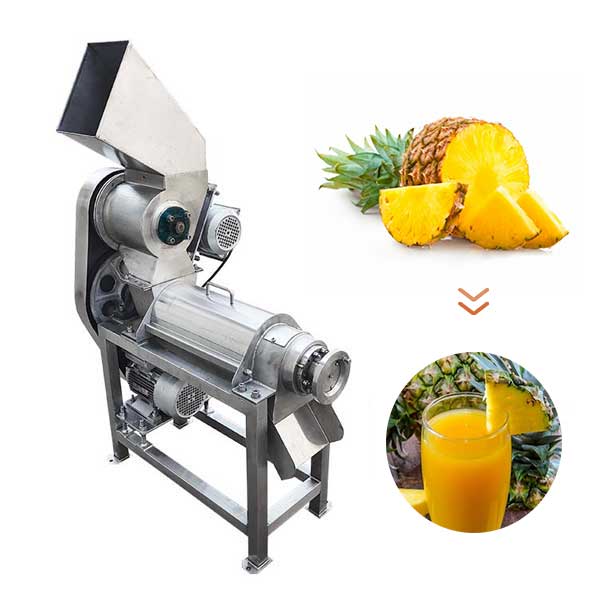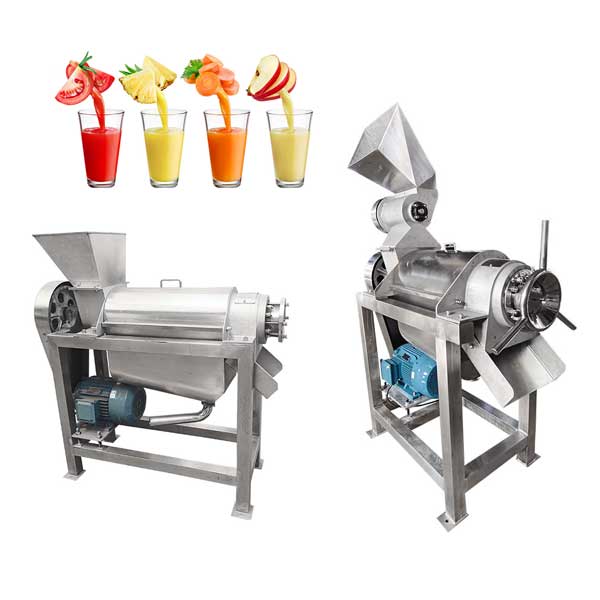Description
Industrial fruit and vegetable crusher machine is used to crush fruits and vegetables into small, uniform particles for further processing, such as juicing, grinding, or pressing. It helps increase juice yield, improve efficiency, and ensure a consistent texture in the final product. Our crusher machine is widely used in:
- Efficient juice extraction or jam production in food processing;
- Volume reduction and improved dewatering efficiency in organic waste management;
- Preparation for fermentation or composting, and more.
Fuxun Machinery has three types of crushers to handle different raw materials and processing goals:
- PS Series Crusher – for berries and softened pome fruits;
- CPJ Series Hammer Crusher – for a wide variety of fruits, vegetables, and organic waste;
- CPS Series Cage Crusher – for general-purpose fruit and vegetable crushing (excluding stone fruits).
PS Series Crusher
The PS Series is ideal for berries and preheated pome fruits, achieving a particle size of 5–8 mm. It is ideal for soft fruits and preheated or softened pome fruits, including tomatoes, kiwis, mulberries, apples, pears, etc. This machine consists of a feed hopper, crushing chamber, flying blades, fixed blades, frame, and discharge hopper. During operation, the rotor blades rotate at high speed between the fixed blades, cutting and shearing the fruit and vegetable material into small pieces.
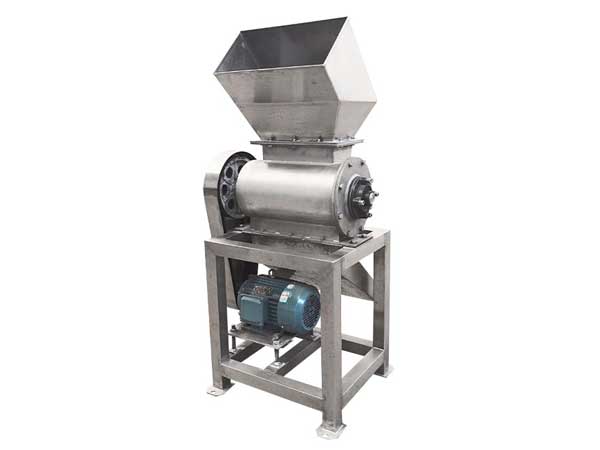
| Model | Power | Output | Dimensions | Weight |
|---|---|---|---|---|
| PS-1 | 2.2 kW | 1 t/h | 1,290*880*1,350 mm | 180 kg |
| PS-3 | 7.5 kW | 3 t/h | 1,400*600*1,400 mm | 450 kg |
| PS-5 | 15 kW | 5 t/h | 1,700*720*1,620 mm | 650 kg |
| PS-10 | 18.5 kW | 10 t/h | 1,900*900*1,900 mm | 850 kg |
| PS-20 | 37 kW | 20 t/h | 2,200*980*2,000 mm | 1,400 kg |
CPJ Series Hammer Crusher
The CPJ hammer crusher machine is suitable for a wide range of raw materials, including apples, pears, carrots, tomatoes, pineapples, and other fruits and vegetables. The machine operates through a high-speed rotor with hammers that strike, shear, and grind the materials fed from the top inlet. A screen mesh under the rotor controls the final particle size — smaller particles pass through while larger ones remain for further crushing. Finally, the crushed material passes through a screen at the bottom. The particle size can be adjusted by changing the sieve plate or the gap between the hammers and the screen.
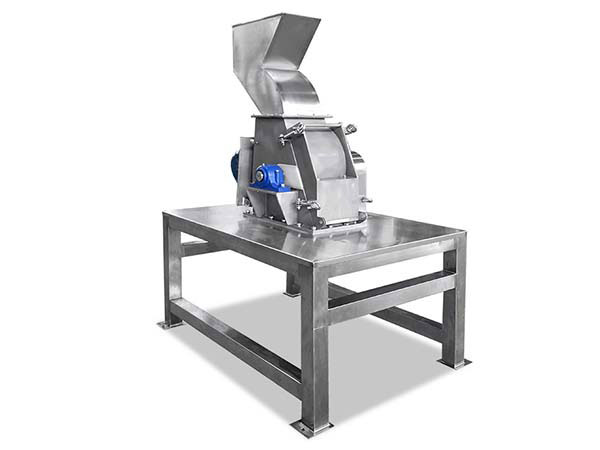
| Model | Capacity | Power | Dimensions |
|---|---|---|---|
| CPJ-5 | 5 t/h | 5.5 kW | 1,200×800×1,500 mm |
| CPJ-10 | 10 t/h | 11 kW | 1,400×1,000×1,900 mm |
| CPJ-20 | 20 t/h | 22 kW | 1,500×1,200×2,200 mm |
Best for: A wide variety of fruits and vegetables, from soft to hard textures.
Choose the CPJ series if: You process different types of fruits and vegetables and need high throughput with adjustable fineness.
CPS Series Cage Crusher
The CPS cage crusher is suitable for most fruits and vegetables, such as apples, pears, tomatoes, wheatgrass, etc. During operation, materials fed through the hopper are first coarsely crushed as they move forward axially. Then, in the high-speed section, the rotor blades and stator knives finely crush the material to a uniform size of 4-8 mm. The crushed product is discharged through the stator openings. Particle size can be adjusted by changing the rotor speed or knife spacing.
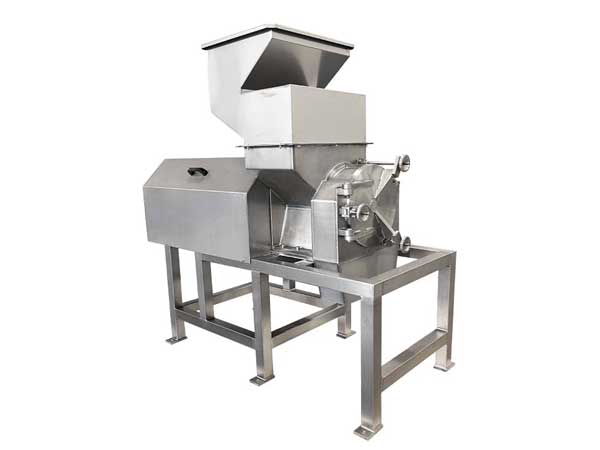
| Model | Capacity | Power | Dimensions |
|---|---|---|---|
| CPS-2 | 2 t/h | 3.0 kW | 950×400×1,650 mm |
| CPS-5 | 5 t/h | 5.5 kW | 1,150×450×1,850 mm |
| CPS-10 | 10 t/h | 11 kW | 3,140×500×2,000 mm |
| CPS-20 | 20 t/h | 22 kW | 1,800×700×2,500 mm |
Best for: Apples, pears, tomatoes, wheatgrass, and other non-stone fruits with moderate hardness.
Difference Between Crusher, Cutter, and Chopper
1. Fruit & Vegetable Crusher
- Main purpose: To break down fruits and vegetables into fine particles or pulp for juice extraction, puree processing, or grinding. The final particle size usually ranges from 4 to 8 mm.
- How it works: Uses rotating blades, hammers, or cage rotors to crush materials through impact, shear, and grinding.
- Output: Pulp or crushed pieces — suitable for juice, jam, or sauce production.
2. Vegetable Cutter
- Main purpose: To slice or dice vegetables into uniform pieces for cooking, freezing, or packaging — more for shape control than size reduction.
- How it works: Uses sharp stationary or rotating blades to cut materials cleanly, not crush them. The cutting structure determines the shape (slices, strips, cubes) and size of the pieces.
- Output: Cleanly cut, uniform shapes — suitable for frozen vegetable, salad, or ready-to-cook processing.
3. Vegetable Chopper
- Main purpose: To roughly chop or mince vegetables into small pieces — coarser than crushing, finer than slicing.
- How it works: Uses rotating blades or discs to chop materials into small fragments. Often used in pre-processing before mixing, cooking, or dehydration.
- Output: Small, irregular vegetable bits — ideal for sauces, soups, or seasoning mixes.

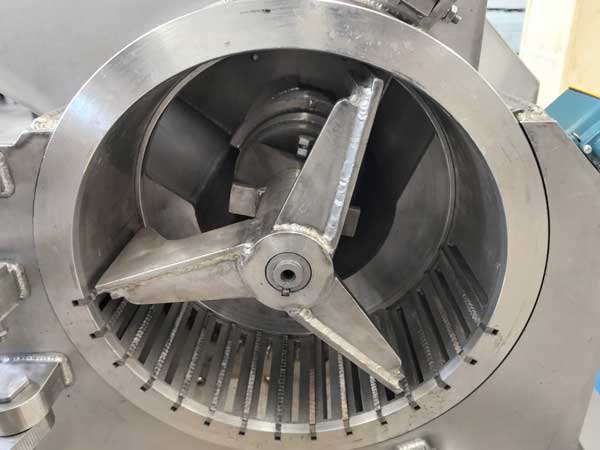
Working Principle
The working process of our fruit and vegetable waste dewatering machine can be divided into four main stages:
1. Feeding & Shredding
Feed the waste material (vegetable leaves, stems, peels, fruit pulp, etc.) to the shredding chamber via the feeding system. The rotating blades cut and tear the material into smaller pieces, ensuring smooth and continuous feeding into the screw press.
2. Pressing
Inside the press chamber, the screw shaft conveys the shredded material forward while gradually reducing the space between the screw. This creates increasing pressure, squeezing the water content out through the screen.
3. Discharge
The liquid passes through the screen mesh and is discharged from the liquid outlet. This liquid can later be used for biogas generation, composting, or wastewater treatment. While the dewatered solids are discharged at the outlet at the end. The solids are suitable for reuse as fertilizer or feedstock.
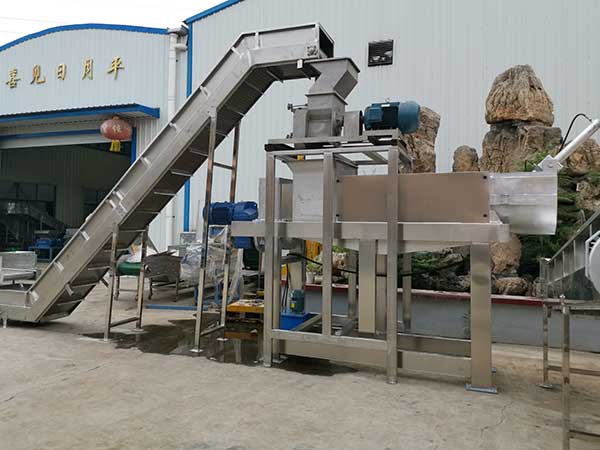
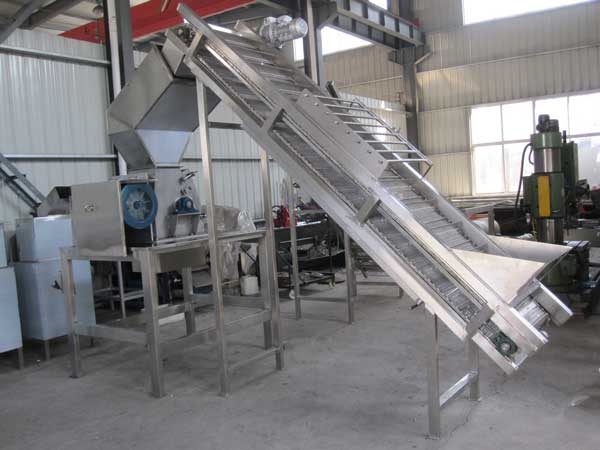
Why Choose Our Fruit & Vegetable Crusher?
1. Wide Application: Our crusher machine is capable of handling fresh or frozen fruits and vegetables for juice, puree, or sauce production. It is also effective for fruit and vegetable waste, reducing waste volume and preparing for further processing, like dewatering.
2. Adjustable Particle Size: The output size can be precisely controlled, allowing smooth integration with downstream processes like juicing or composting.
3. Hygienic & Food-Safe Construction: All material-contact parts made from stainless steel and food-grade rubber or nylon seals. The stainless steel material makes it easy to clean, corrosion-resistant, and meets hygiene standards.
4. High Throughput & Efficiency: Industrial-scale capacity (1-20 t/h), suitable for factories, food processing plants, and organic waste management facilities.
Whether you need to crush fruits for juice production or prepare fruit and vegetable waste for dewatering or composting, Fuxun provides the right solution with proven performance and quality assurance. Contact us today to get a customized solution for your fruit and vegetable processing or waste management project.


